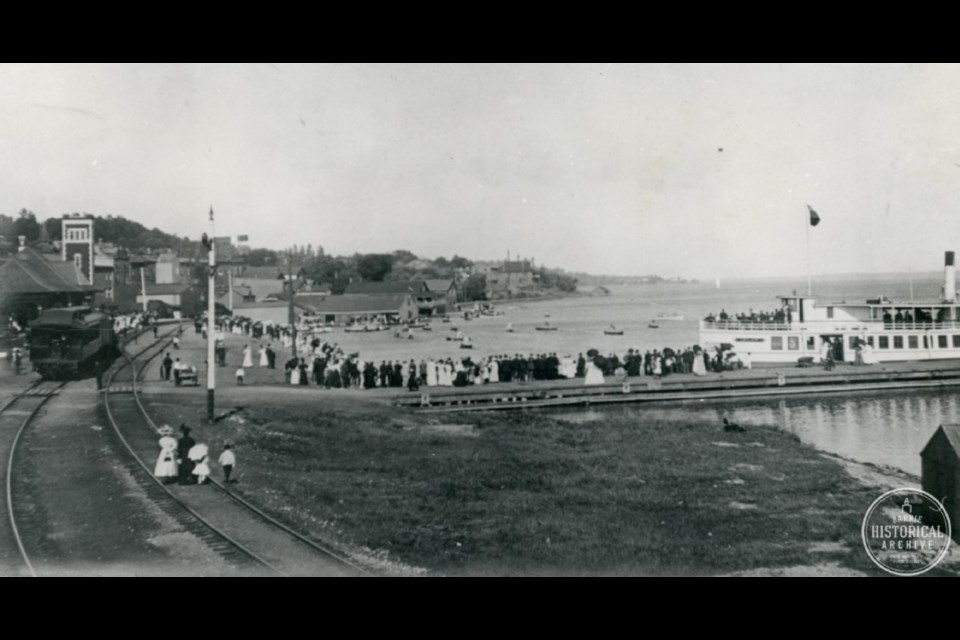Editor's note: To read Part 1, click here. To read Part 2, click here.
It was May 18, 1882, and the passenger steamer Manitoulin was ablaze on Georgian Bay.
Below deck, the chief engineer was on his own in the fight to save the steamer. The ferocity of the blaze had driven back the rest of the crew.
In near darkness, he followed the hose with his hands and discovered no nozzle was attached to it. With nothing left to do, the engineer abandoned his firefighting efforts and went to assist on the deck.
On deck, the chief engineer saw people floundering in the water. He noticed, for the first time, that Capt. Peter Campbell had the steamer pointed directly for shore, and the engineer wondered if they would make it as the shore was still a good distance away.
After an unsuccessful attempt to open the steamer’s throttle, the chief engineer turned to the only task that counted anymore: the evacuation of the boat. This effort continued until he was knocked off his feet by the sudden beaching of the Manitoulin. The engineer fell into the water and waded to shore.
In the aftermath, the task of tallying the numbers of lost souls began. As the purser had not completed taking the names of all who boarded the ill-fated Manitoulin, no full account could be made.
A week after the disaster, nine names appeared on the list of victims. There were certainly more.
In June, the burned-out hull of the Manitoulin was towed to Owen Sound, where any useful machinery was removed.
Georgian Bay can be a merciless highway and has no regard for mourning periods. The Manitoulin’s dead — the ones who could be found — were buried and the families continued to grieve through the summer.
Another tragedy, far worse than this, was just around the corner.
In this era, people who lived in island communities, or in remote outposts along the Georgian Bay shoreline, had little option but to travel by water. Every trip came with a good dose of risk.
After the Manitoulin’s loss, the Great Northern Transit Company was down a steamer. By mid-summer, they had solved that problem with the addition of the Asia, a 136-foot steamer. She was nine years old and, as some have suggested, perhaps badly designed and not suited to Georgian Bay.
On Sept. 13, 1882, the Asia was hurriedly loaded at the Collingwood dock. With winter on the horizon, there was an urgency in the air. Tools, animals, food items and other supplies were needed at the many lumber camps around the region.
As with the Manitoulin, no one really knows how many passengers the Asia carried on her last voyage. The numbers vary from 120 to more than 140. It is known that every below-deck cabin was filled and that many lumbermen were forced to sleep on the deck among boxes that could not be fitted into the hold.
The Asia was likely overloaded.
This recipe for disaster was missing only one ingredient — bad weather — and Georgian Bay did not fail to supply it.
Two people survived the Asia sinking: teens Duncan Tinkiss and Christine Morrison. They lived to describe the storm and its massive waves, and how quickly those waves broke apart and sank the steamer.
The teens boarded a small lifeboat, along with Capt. J.N. Savage and a dozen others. By daybreak, only the pair of young people remained.
Tinkiss seems like an unusual surname, so I took a closer look. In fact, the list of the Manitoulin survivors included four people with the same surname. These fortunate folks were Duncan’s parents and sisters.
Less fortunate was the Henry family. Lumbermen brothers Robert and William Henry arrived on Manitoulin Island in 1872 and set up a sawmill. They had become rather successful by 1882.
Robert was lost in the Manitoulin sinking and William went down with the Asia. William’s widow sold everything and took her five children far from Manitoulin Island. William’s son, George Stewart Henry, eventually became the 10th premier of Ontario.
And Capt. Campbell? He carried on doing what he always did — navigating steamships through the water of an often-temperamental bay. These vessels included the Northern Queen, the Atlantic, the Majestic, the City of Collingwood and more.
Apparently, Georgian Bay lake water ran in his veins.
Each week, the Barrie Historical Archive provides BarrieToday readers with a glimpse of the city’s past. This unique column features photos and stories from years gone by and is sure to appeal to the historian in each of us.



